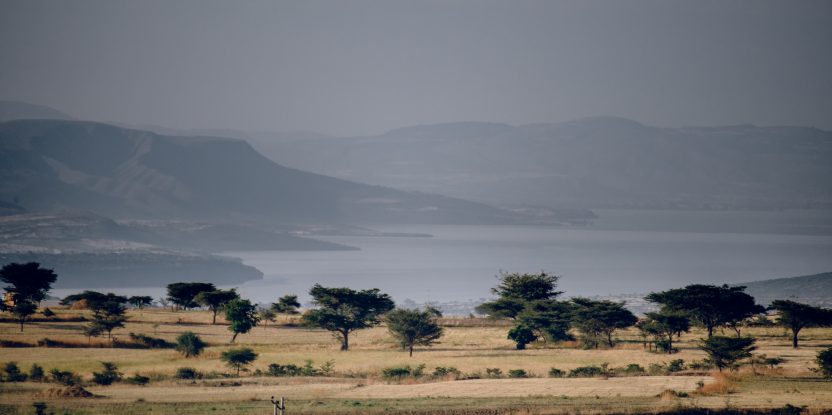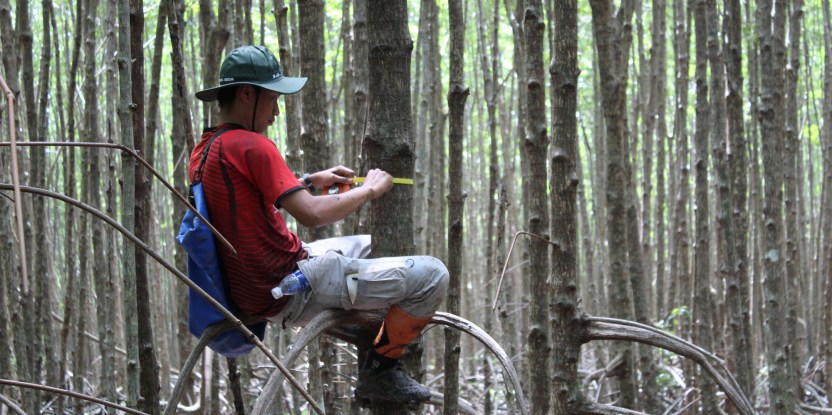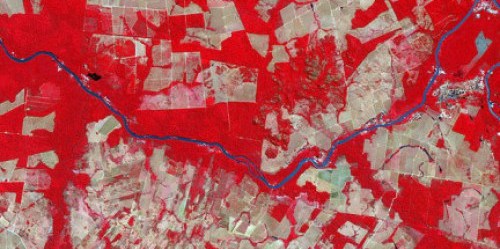
The forests of Ethiopia are famous for producing the world’s best coffee. But something else is about to emerge from these forests: an innovative system for the local monitoring and management of forest change.
“The story of this research is basically the integration of a bottom-up, participatory component of forest monitoring with a top-down, remote sensing component,” says Martin Herold, a Senior Associate at the Center for International Forestry Research (CIFOR) and a professor at Wageningen University in the Netherlands.
“This is the first time that such an interactive monitoring technique has been developed.”
Two recently published studies by Herold and his colleagues detail the design of an interactive system, which allows for relevant satellite data to be shared, confirmed and augmented by local experts.
But the system is intended to go well beyond monitoring.
“Beyond the technological question of how you integrate the two data sources, there’s an even more important question of empowerment,” says Herold. He hopes it will ultimately mean that local communities, forest rangers, specialists and officials can better manage the forests that surround them.
“We hope it becomes more than just a monitoring system, leading to better management and decision-making systems.”
Interactivity at the system’s core
“There has always been the idea that local people should be involved in monitoring forest changes,” says Herold. “But up until now, they have often been used to just validate the data coming from satellites, which is useful but not very attractive for local people.
“So we have been continually asking how we can enable better information flows, sharing and transparency to stimulate changes to forest management that need to happen locally.”
Such open exchange of information has already yielded some surprising effects.
Arun Pratihast, lead author of one of the project’s studies, explains an interesting case where remote sensing picked up forest changes due to slash-and-burn agriculture.
The results were shared on a Facebook group that includes agricultural officers and local experts.
“This led to two things,” says Pratihast. “There was a campaign led by the agricultural officers to discourage slash-and-burn practices that found its way onto local radio. Then, local experts made an educational program to inform more people on the situation.”
Experts at the forest’s edge
The monitoring system was developed and given its first real-world demonstration in the Kafa UNESCO Biosphere Reserve in southwest Ethiopia, which was established with the support of the German NGO NABU and the German Forest and Climate Initiative (IKI).
The presence of local forest rangers was one advantage the project had from its inception.
“Because the forest has been designated a Biosphere Reserve, there is already some forest protection in place,” says Herold.
“These are people chosen by local communities to carry out monitoring, and we’re just providing the technology to support that task.”
It’s amazing how little technology is required to make a big difference.
“At first, there were 30 rangers and we were using a paper-based monitoring system,” says Pratihast. “Then we gave each of them a mobile phone with the support of a Google Earth Engine Research Award. The rangers said they wanted to know where in the forest the changes were happening so they could target those areas.”
The system became more refined over time as the scientists and local experts better understood what kind of support each could provide to the other.
“We wanted to empower them,” says Pratihast. “By the later iterations, we were getting just as good a flow of data with ten rangers using mobile phones equipped with notifications and specially-designed apps, as we initially were with 30 rangers and a paper-based system.”
Designed to share
One thing that Herold and his colleagues are adamant about is the transferability of the monitoring and information sharing system they’ve designed.
The story of this research is basically the integration of a bottom-up, participatory component of forest monitoring with a top-down, remote sensing component
“The papers are open source, the tools are open source, all of the code for the apps we’ve designed are open source,” says Herold.
“We did this deliberately to make the system easily replicable in other locations. We’re really trying to scale this up.”
With CIFOR’s involvement, the team has already exported the monitoring system to a place far removed from its Ethiopian origins: Peru. The system has been implemented in three Peruvian communities (Purto Ocuupa, Loma Linda and San Pedro De Pichanaz), and a series of training and capacity development programs are ongoing in partnership with US Forest Service and Silvacarbon.
“We’ve demonstrated that the system works in the Kafa Reserve and now we’re working on continuing it with this case in Peru,” says Herold. “There’s a mandate of monitoring as a part of an incentives package available for local people to help protect forest, and it’s basically operating the same way over there.”
Herold and his team have bold visions for how far this system could go, especially in light of recent international and national initiatives on forests, like REDD+.
“You have all these ideas and decisions and policies at the national and international level,” says Herold. “But the intended consequences of those things are supposed to happen locally.”
“That’s where our system comes in to bridge that divide. You can take advantage of satellite data, and together with decisions on forest policy made at the national level, that information becomes available and relevant at the local level where it can really matter.
“Maybe we’ll eventually see sustainable supply chain activities like deforestation-free policies being monitored and implemented in a similar way. Ultimately, all of these initiatives seek to change local behavior, to move people away from cutting down the forest.”
We want you to share Forests News content, which is licensed under Creative Commons Attribution-NonCommercial-ShareAlike 4.0 International (CC BY-NC-SA 4.0). This means you are free to redistribute our material for non-commercial purposes. All we ask is that you give Forests News appropriate credit and link to the original Forests News content, indicate if changes were made, and distribute your contributions under the same Creative Commons license. You must notify Forests News if you repost, reprint or reuse our materials by contacting forestsnews@cifor-icraf.org.

